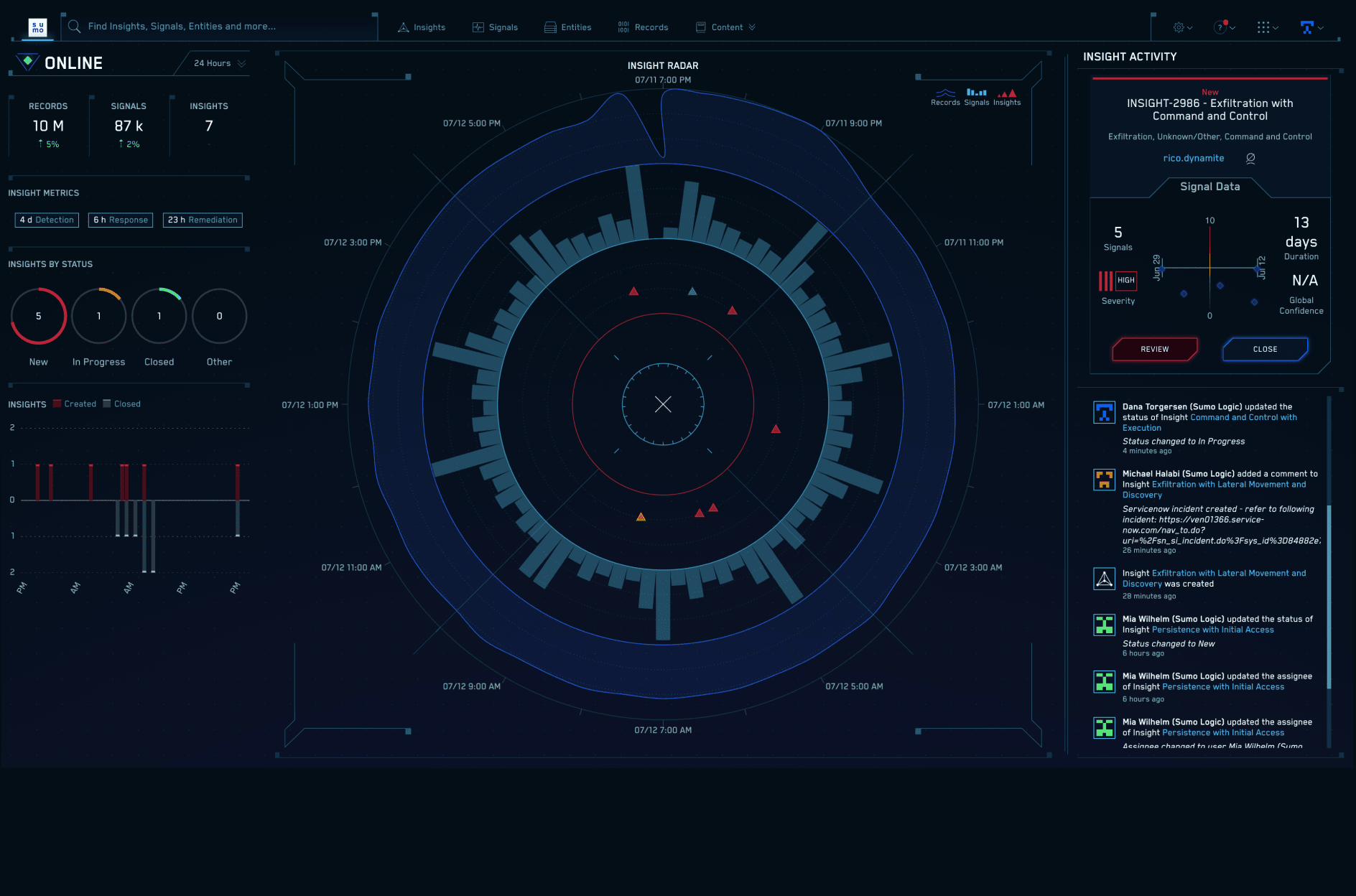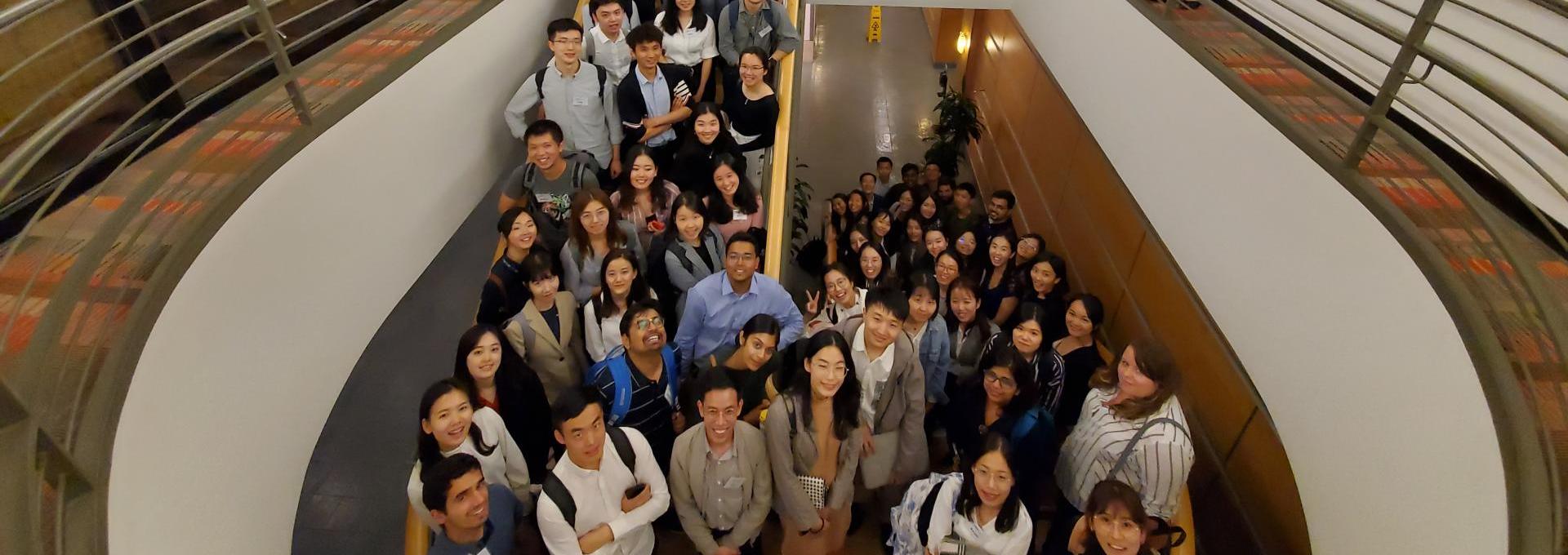Sumo Logic + UC Davis: Data Analytics

Spring Theory worked with Sumo Logic, a data analytics platform that helps solve problems for Development, Security, and IT teams.
And, as you might imagine, doing so for more than 2,000 clients around the world takes a lot of computing power. In fact, the company’s platform analyzes over 100 petabytes of data on a daily basis. (That’s more than twice as much information as humankind has EVER written!)
They also perform 30+ million searches and handle a staggering 500+ trillion record queries every day, for both cloud-native firms and traditional enterprises.
The challenge
One thing had remained a challenge for the company, though—using their own data to feel confident that they’re delivering a differentiated customer experience.
The company uses its own product to monitor customer usage patterns: number of logins per day, number of users, number of queries performed, and so on.
But in today’s world, Customer Experience is everything. And with so many options out there for any service, consumers expect nothing short of flawless user experience—and the companies that can deliver it, are the ones that will survive in this customer-first world.
That’s why they came to us with an ambitious but workable goal—renewing 90% or more of the revenue they acquired, and seeing that revenue grow to 130%+ over the course of the customer lifetime.
However, they were confident that by using their own platform to leverage data, they could help their customers find maximum value from their product.
After all, they were sitting on what they call a “data tsunami”—so if they could unlock customer insights to help them zero in on the right customers, at the right time, with the right information to retain and grow their partnerships, they couldn’t help but succeed.
In fact, they already knew that, on average, they grew customer accounts a massive 6x when they were able to retain them for 24–36 months.
The key was retaining them.
We partnered them with UC Davis

Enter the UC Davis Master of Science in Business Analytics (MSBA) program. When we partnered our client company with them, they were ready and willing to take on the organization’s biggest challenges.
“Spring Theory was indispensable in connecting our program to the client,” said Professor Sanjay Saigal, the faculty adviser who guided the project.
“Not only that, they were also key to managing the often complex administrative, logistical, and contractual aspects of the relationship between our school and the company.”
With Spring Theory’s help, the company identified two goals for the MSBA students.
The first was revenue expansion.
In the past, the company had been successful with a “land-and-expand” strategy. On average, new customers doubled their commitment within their first 12 months.
But customers come in all shapes and sizes, which meant that the way they used the platform could vary widely—so it was hard to predict which adoption (or lack-of-adoption) patterns meant trouble.
Furthermore, they had never undertaken a systematic analysis of the attributes and usage patterns that made customers stick and grow.
So building models from existing customer usage data to identify opportunities to increase
customer adoption, and developing metrics for customer health (as well as tracking and reporting dashboards) were priorities here.
Secondly, revenue retention— total dollars renewed out of the total available contracts to renew—was also important. So the plan was to ask the students to build models that identified a risk of customer churn, then develop metrics for customer health.
From these, the company hoped to learn how to predict which customers might churn, then use account management interventions to retain them.
The project
In a bit of good luck for our client, the student team we partnered them with was both highly capable and tenaciously dedicated.
It was a mutually beneficial relationship. The students got to build experience with a real-world project, and the company was able to work for the first time ever with a data science team on initiatives where even a small percentage lift in revenue retention or expansion would be extremely lucrative.
No surprise, then, that everyone from the CEO on down was fully committed to the project—and stayed involved throughout the entire process.
“We had a great experience that exceeded our expectations,” said their VP Business Operations. (A 20-year veteran of the tech industry, he acted as executive champion for the project.)
“We spent a lot of time to ensure that the students understood what our technology was, what our value proposition was, what it was that we did for our customers, and what the competitive landscape was like,” he said. “The students even got certified on how to use our solution.”
“The students were very communicative with us,” added their Manager of Sales Operations.
“In the beginning, it was really important for us to make sure that the students understood our business as they were looking at the data, that they could contextualize it in terms of how we run.
“And so in the first couple months, we spent a lot of time bringing in experts to talk to the students, whether that was our Director of Sales Enablement, or an account executive, or our Chief Revenue Officer, and so on.”
The results
What results did they see? For obvious reasons, a security-focused company is unable to discuss specifics—but they can say they were thrilled.
“We had a lot of internal hypotheses about our business—a lot of gut feelings that were driven by people’s experience or intuition,” their VP continued.
“But when you look at the results of this project, there were several things that were validated. There were also some interesting findings that we did not know—patterns in the business that we simply weren’t aware of. They were shocking, but the data was actually correct. And as a result of validating all of that, we were able to take immediate action on some really important parts of our business.”
UC Davis was pleased, as well, according to Professor Saigal.
“We’re proud that the majority of our students’ practicum recommendations are implemented by our industry partners—and this project was no exception,” Saigal said. “I give full credit to their team for guiding the students with a sure hand.”
“But here’s something even better. In the last year we did projects with 14 different partners like this one. 10 of them have indicated very, very strong interest in coming back next year. We might have the interesting challenge of having to pick and choose between projects!”
There have also been some additional benefits for the company—they’ve already hired two of the students from the MSBA team.
In other words, wins all around for our client, who will now have new analytics capacity, better insight into their mountains of usage data—and millions in revenue to add to the bottom line.
